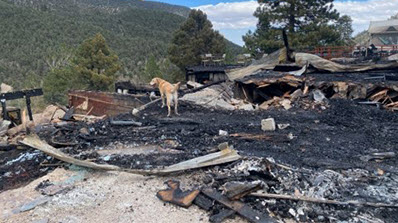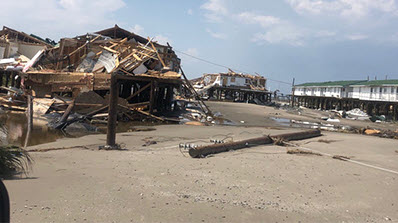Michael Porter is no stranger to pitching in to help in the wake of emergencies, accidents, and natural and manmade disasters. A firefighter at the Nevada National Security Site (NNSS) and member of the Nevada Task Force 1 Urban Search & Rescue team (NV-TF1), Porter has participated in nine deployments over the last 13 years to assist those most in need in the wake of hurricanes, floods and fires. He has seen destruction and responded to calls for help.
September took Porter to two very different rescue operations. First, he served as a rescue manager in response to Hurricane Ida on Grand Isle, an eight-mile long barrier island off the coast of Louisiana. When his search and rescue team arrived, Grand Isle was completely deserted and still. They moved methodically, following their training, systematically conducting 1,500 structural assessments. They conducted a second rescue search, working meticulously alongside local crews and the Colorado Urban Search and Rescue team.
Shortly after his return from Louisiana, Porter was deployed again, but this time closer to home: the Mt. Charleston Lodge fire. Porters’ dog, Dexter, is trained to detect human remains and can sniff out what could have been missed during recovery operations. The two searched the structure to be sure there were no lives lost in the fire.

“I have the skillset, and I have the trainings,” he said. “Why wouldn’t I go out and help? I have a desire to help when I can and to use my skills to assist others in need.”
Porter joined the NV-TF1 in 2008, which is one of FEMA’s 28 Urban Search & Rescue task forces that can be deployed to a disaster area. The teams consist of 70 members with expertise in search, rescue, medicine, hazardous materials, logistics and planning, and specialists such as structural engineers, physicians and canine search teams. Each team is equipped and ready to deploy within six hours in various response models based on the needs of the situation. When federal support is anticipated prior to an event such as a hurricane, resources are often pre-positioned along with other federal responders to expedite support following the disaster.
Porter said responding to the Houston area for Hurricane Harvey in 2017 had a lasting impact on him. People who had lost everything were coming up to the rescues teams to see what they needed, offering the search teams water and food.
“We were the ones there to make sure they had those things,” he said. “The resilient and giving spirt of the people of Texas was amazing and something I will always remember.”
The most challenging aspect, he said, is knowing you cannot help everyone because, when you’re deployed, it’s vital to stay focused on your assigned mission and not get distracted. “You are part of a bigger picture, and if you don’t do what you are assigned, you affect others and the overall plan.”

